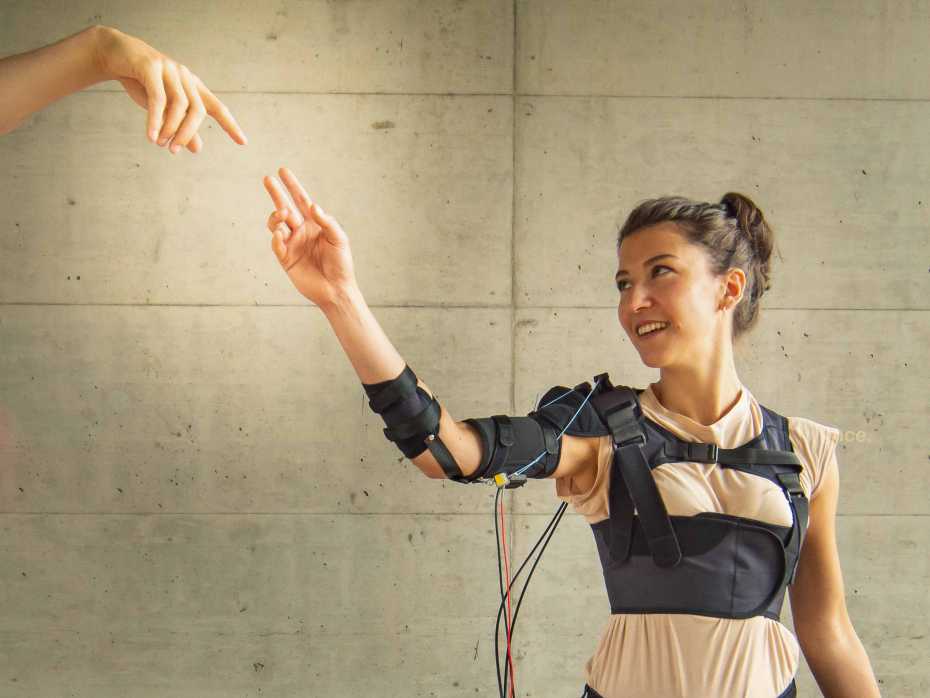Researchers at ETH Zurich have developed a lightweight, wearable textile exomuscle that uses sensors embedded in its fabric to detect a user’s movement intentions and chip in extra force as needed. Initial tests show a significant boost in endurance.
Where powered exoskeletons act as both muscle and bone, providing force as well as structural support, exomuscles make use of the body’s own structure and simply chip in with additional force. As a result, they’re much lighter and less bulky, but they’re also limited in how much force they can deliver, since human bones and joints can only take so much.
This “Myoshirt” from ETH Zurich is designed as a vest, with cuffs for the upper arm and forearm. Sensors in the fabric feed data on muscle control impulses to a control box, which processes the information in real time and decides when to actuate the artificial muscles – which are short Dyneema cables aligned parallel with the wearer’s own muscles. By shortening the cables as the muscles contract, the Myoshirt is able to contribute power to your movements in a subtle, discreet, intuitive and tuneable way.










Comments are closed.